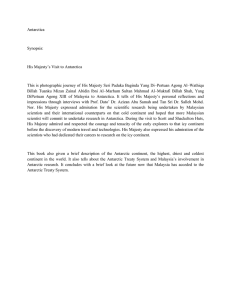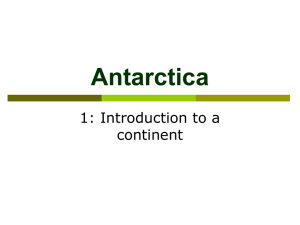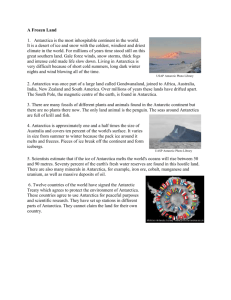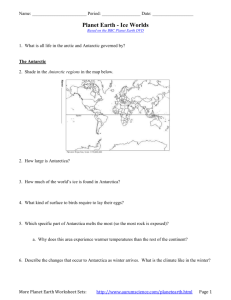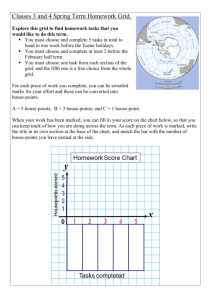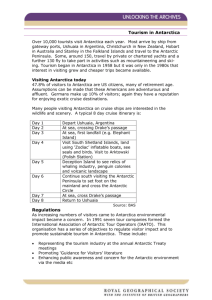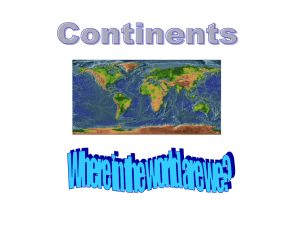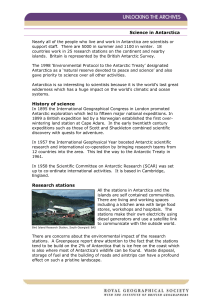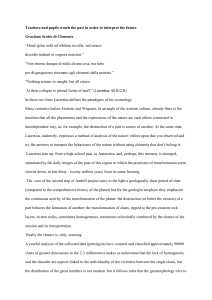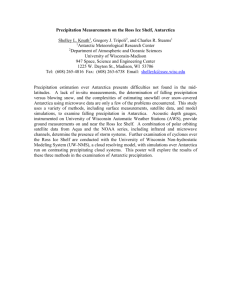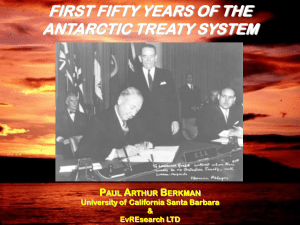ANTARCTICA PHYSICAL GEOGRAPHY & CLIMATE The fifth
advertisement
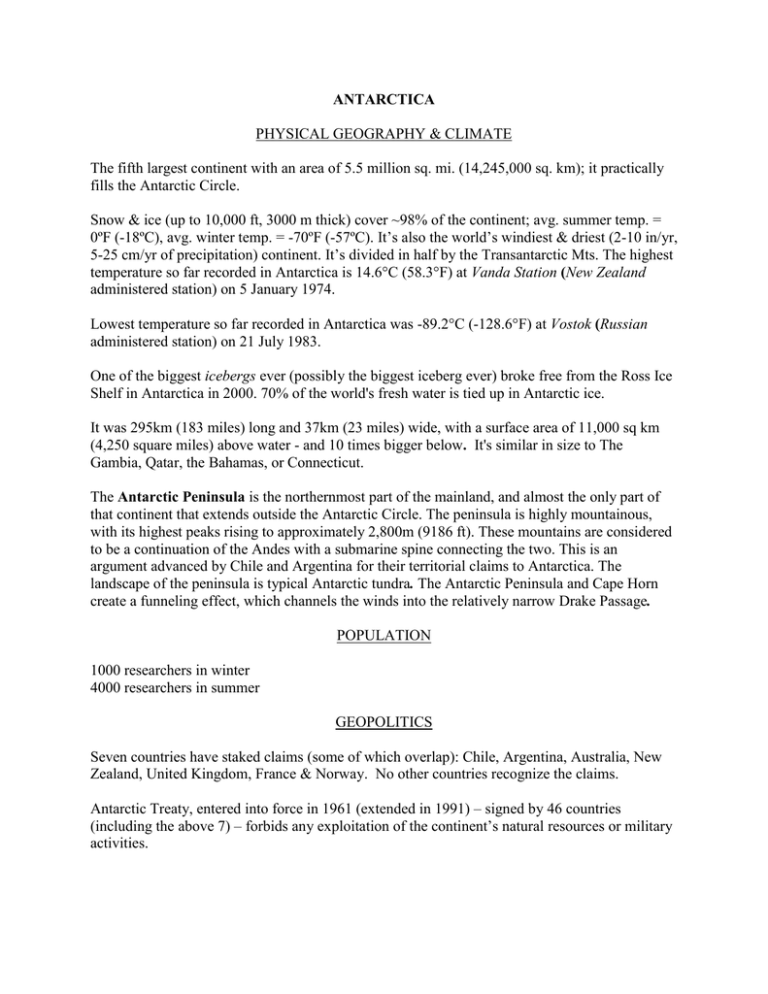
ANTARCTICA PHYSICAL GEOGRAPHY & CLIMATE The fifth largest continent with an area of 5.5 million sq. mi. (14,245,000 sq. km); it practically fills the Antarctic Circle. Snow & ice (up to 10,000 ft, 3000 m thick) cover ~98% of the continent; avg. summer temp. = 0ºF (-18ºC), avg. winter temp. = -70ºF (-57ºC). It’s also the world’s windiest & driest (2-10 in/yr, 5-25 cm/yr of precipitation) continent. It’s divided in half by the Transantarctic Mts. The highest temperature so far recorded in Antarctica is 14.6°C (58.3°F) at Vanda Station (New Zealand administered station) on 5 January 1974. Lowest temperature so far recorded in Antarctica was -89.2°C (-128.6°F) at Vostok (Russian administered station) on 21 July 1983. One of the biggest icebergs ever (possibly the biggest iceberg ever) broke free from the Ross Ice Shelf in Antarctica in 2000. 70% of the world's fresh water is tied up in Antarctic ice. It was 295km (183 miles) long and 37km (23 miles) wide, with a surface area of 11,000 sq km (4,250 square miles) above water - and 10 times bigger below. It's similar in size to The Gambia, Qatar, the Bahamas, or Connecticut. The Antarctic Peninsula is the northernmost part of the mainland, and almost the only part of that continent that extends outside the Antarctic Circle. The peninsula is highly mountainous, with its highest peaks rising to approximately 2,800m (9186 ft). These mountains are considered to be a continuation of the Andes with a submarine spine connecting the two. This is an argument advanced by Chile and Argentina for their territorial claims to Antarctica. The landscape of the peninsula is typical Antarctic tundra. The Antarctic Peninsula and Cape Horn create a funneling effect, which channels the winds into the relatively narrow Drake Passage. POPULATION 1000 researchers in winter 4000 researchers in summer GEOPOLITICS Seven countries have staked claims (some of which overlap): Chile, Argentina, Australia, New Zealand, United Kingdom, France & Norway. No other countries recognize the claims. Antarctic Treaty, entered into force in 1961 (extended in 1991) – signed by 46 countries (including the above 7) – forbids any exploitation of the continent’s natural resources or military activities. The Argentine, British, and Chilean claims all overlap, and have caused friction. Australia claims the largest area. Various countries participating as members of Antarctica Treaty have a territorial interest in the Antarctic continent but the provisions of the Treaty do not allow them to make their claims while it is in force. Brazil has a designated 'zone of interest' that is not an actual claim. Peru has formally reserved its right to make a claim. Russia has reserved its right to claim "territories discovered by Russians", which potentially may refer to the entire continent. South Africa has formally reserved its right to make a claim. Spain has formally reserved its right to make a claim. United States has formally reserved its right to make a claim. ECONOMICS Fishing off the coast and tourism, both based abroad, account for Antarctica's limited economic activity. A total of 37,506 tourists visited during the 2006–07 Austral summer with nearly all of them coming from commercial ships. The number is predicted to increase to over 80,000 by 2010. Antarctica is the best place in the world to find meteorites. Why? - 2 reasons
